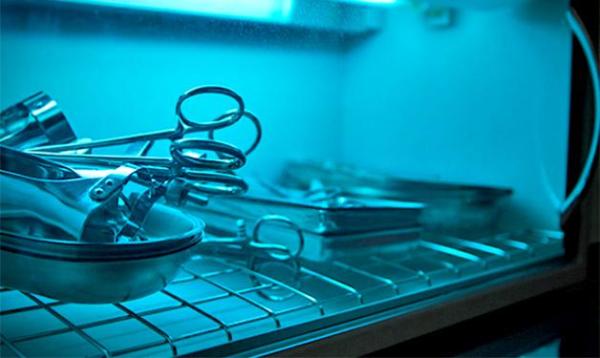
Hospitals administrators are turning to more eco-friendly options

Despite major advancements in technology, surgical procedures are still associated with complications such as infections and sepsis. Lack of antiseptic measures and unsafe instrument sterilization practices often lead to surgically-induced infections. A robust instrument sterilization system thus plays a vital role in not only minimising risks of infections, but in also ensuring faster turnaround of instruments in the operation theatre, thus improving the overall efficiency of the hospital.
Conventional Methods
Although steam-based autoclaves have been around for decades, they require huge amounts of water and exhaustive installation for functioning. Moreover, delicate instruments such as endoscopes and micro-surgery sets are heat and moisture-sensitive and cannot be sterilized through this method. Flash Sterilization too is not an alternative for such devices as it leads to damages.
Why go for Green Sterilizers
Many hospitals are aiming to be carbon- neutral in the near future. Improving the sterilization facilities in a hospital and going for green sterilizers is one such important measure that could reduce the toxic output from a hospital, while enhancing costeffectiveness at the same time. The Green Revolution in Sterilization is aimed at reducing the detrimental effects of sterilization services on environment, patients, and healthcare workers. There are many tangible and intangible safety and cost benefits associated with green sterilizers and adopting them would make hospitals pollution-free and cost-effective. However, hospital administrators should ensure that speed and efficacy of sterilization is not compromised.

H2O2 Gas Plasma Sterilization
The low-temperature Hydrogen Peroxide (H2O2) gas plasma sterilization system meets all the key characteristics of a perfect green sterilization technology. The system saves costs and resources and makes the instrument reprocessing cycle, fast and efficient. It is eco-friendly and safe for patients, healthcare workers, and instruments. It drastically reduces the post-operative infection rate. Moreover, the system is simple to install and easy to operate. This technology has been in use in the US since 1993, whereby H2O2 gas is injected in a vacuum chamber containing the instruments to be sterilized. This is followed by application of a strong electric field that creates plasma, which is extremely effective against micro-organisms. The plasma process ensures that the entire sterilization cycle remains non-toxic, and releases eco-friendly by-products (water vapour and oxygen) at the end. Thus, the sterilized instruments are free from toxic residues and do not require aeration or washing before use.
For more information, please write to ASP at tkamala1@its.jnj.com, call on 09380180019 or visit https://www.aspjj.com
Reference:
https://www.aspjj.com/us/sites/default/files/ Frontiers/Winter-2009/ASP%20Go%20Green%20 AD-55290-001%20Rev.%20A.pdf Article approval reference: JJMI-MAASP/1309449
| STERRAD® Systems Technology “ Safe SolutionSTERRAD® Systems protects the instruments, users, patients and environment in a healthcare facility, using low-temperature H2O2 Gas Plasma for terminal sterilization of medical devices, with no toxic residue.Key Features: >> Ensures a safe working environment >> Results in no odors or hazardous emissions >> Requires only a simple plug-in for electricity >> Saves hours of aeration >> Has been proven to be gentler on devices than peracetic acid and steam >> Produces only ordinary oxygen and water vapour as byproducts >> Can quickly process heat and moisture sensitive devices |
Be a part of Elets Collaborative Initiatives. Join Us for Upcoming Events and explore business opportunities. Like us on Facebook , connect with us on LinkedIn and follow us on Twitter , Instagram.












